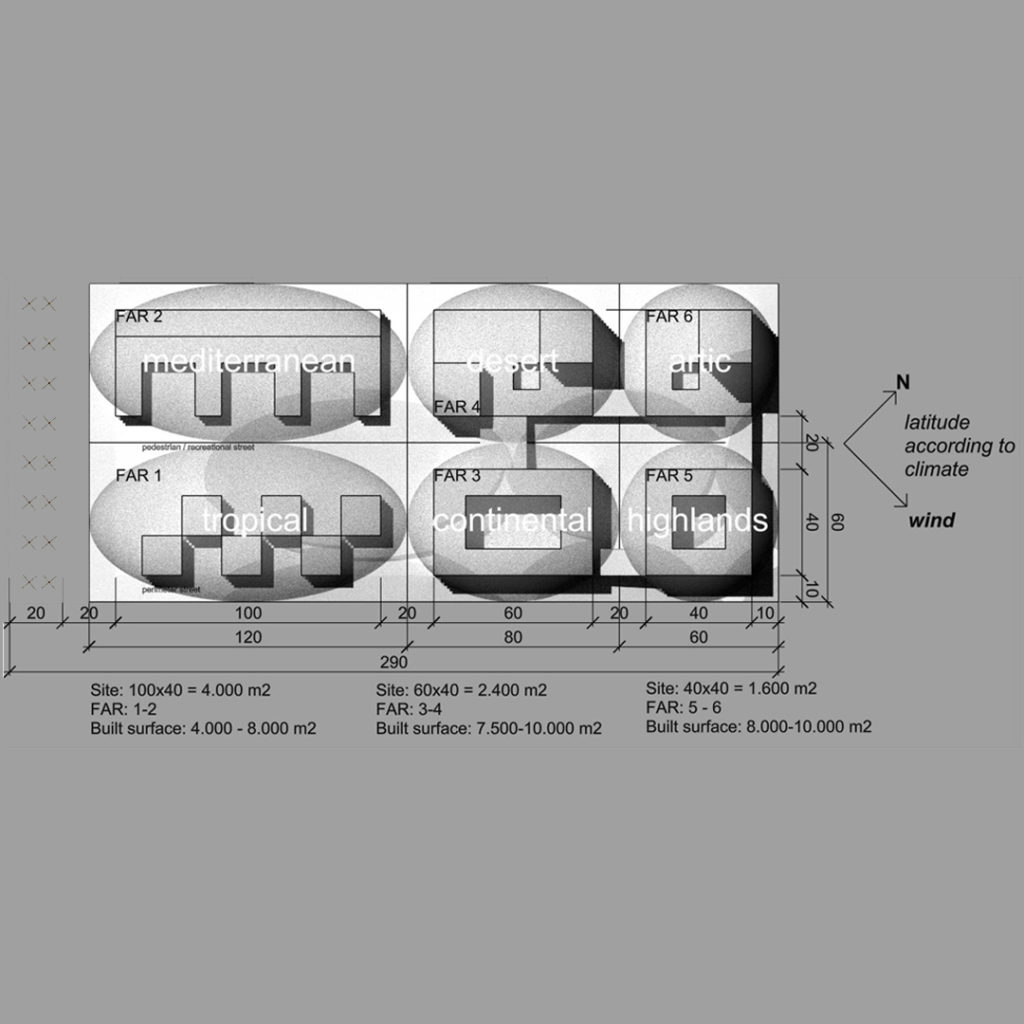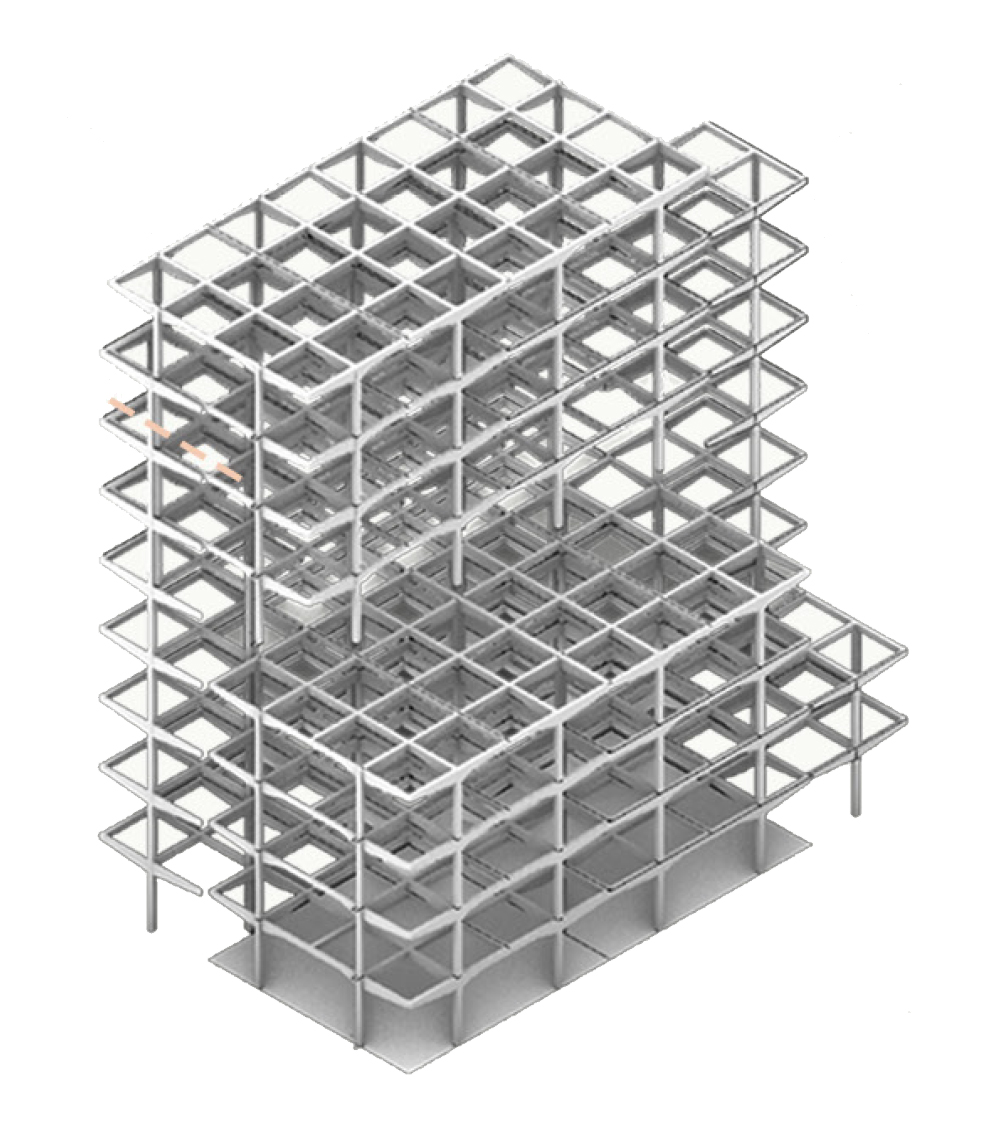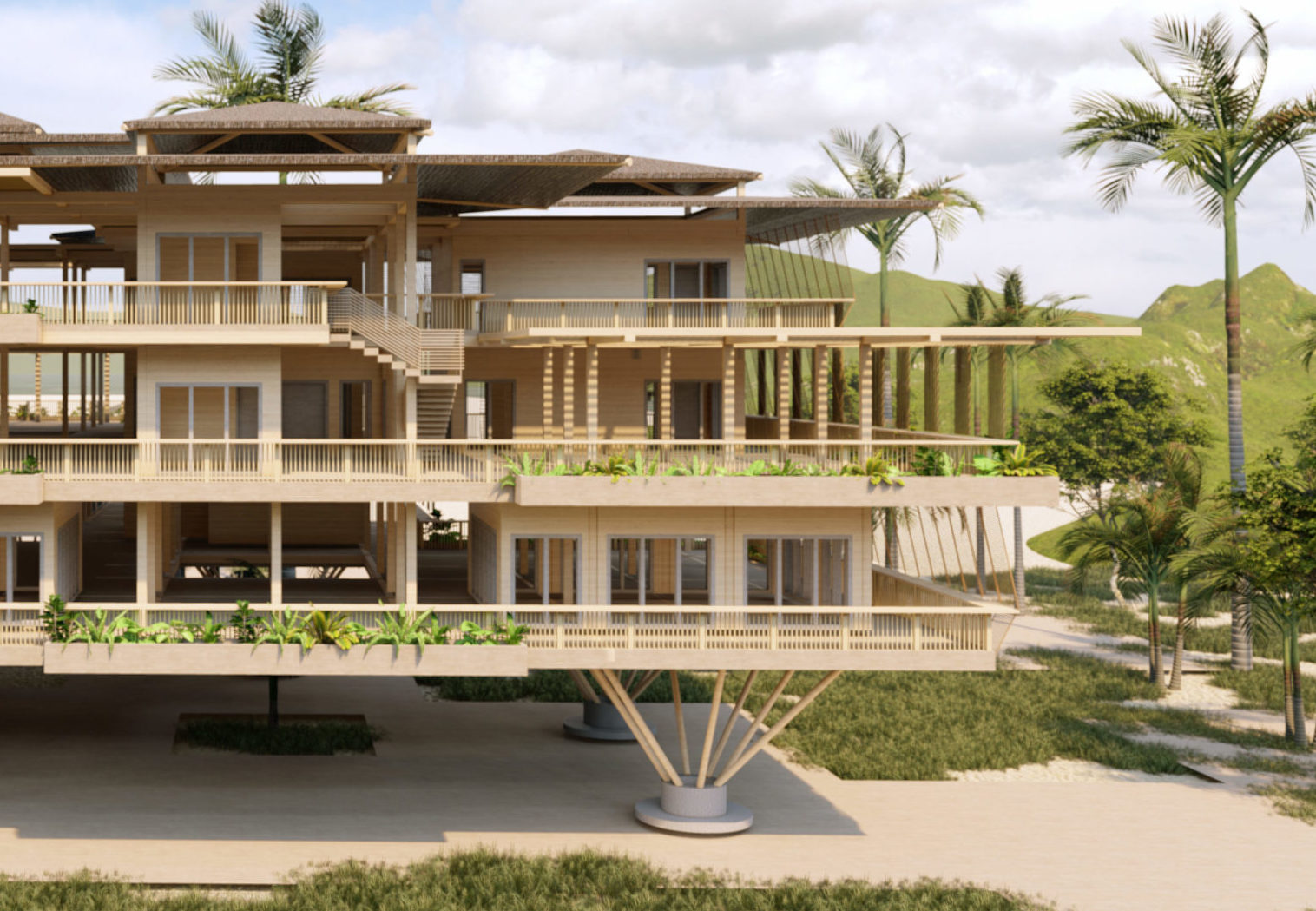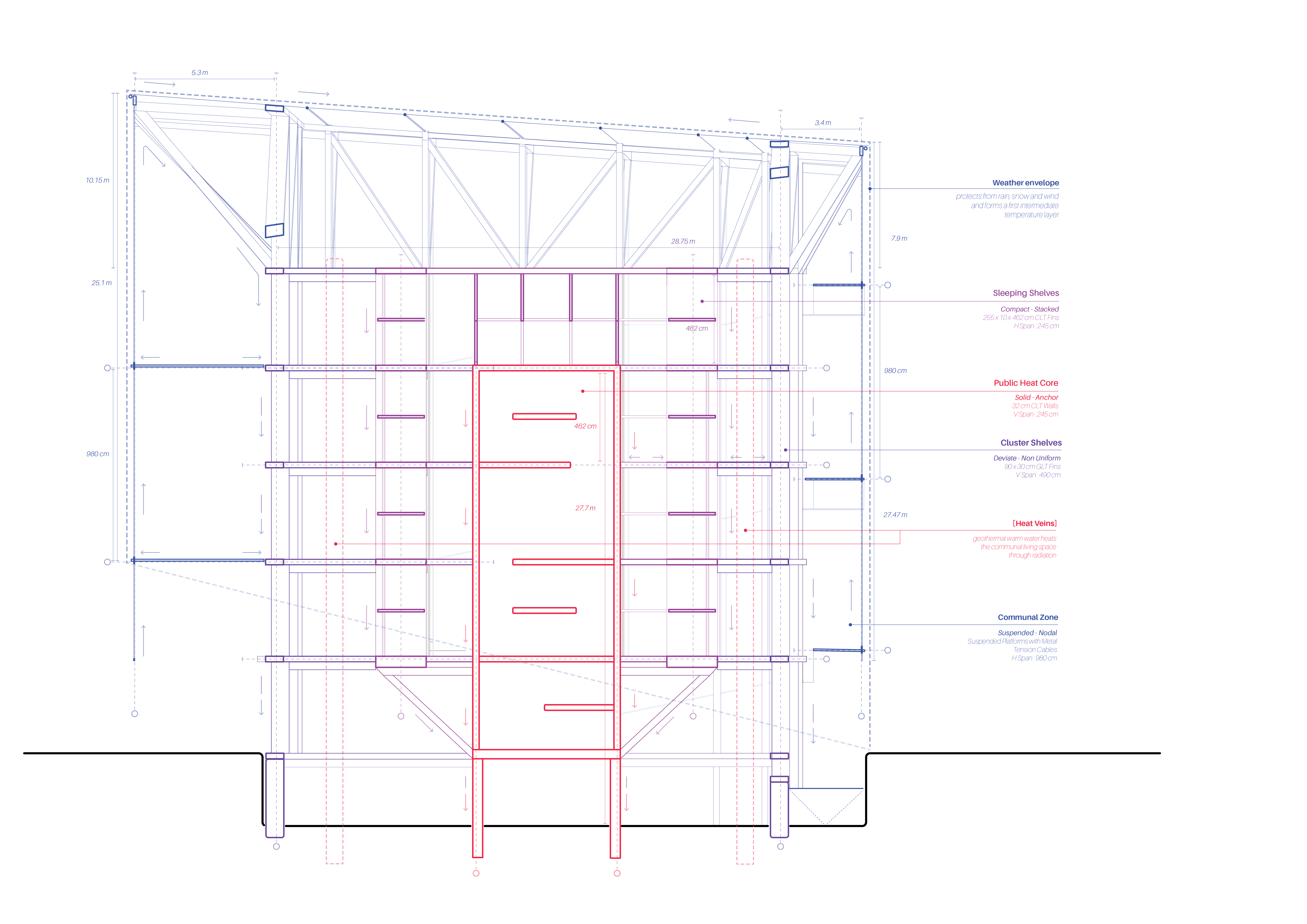The process is conceived as a dialectic exploration in small groups, with a first phase in which we will generate structural variations of the volumes inherited from previous workshops, analyzing and
manipulating them, defining structural matrixes that occupy, define and segment space and addressing the character and consistency of the resulting structures (including programmatic and contextual implications). Subsequently, prototypes will be selected and developed, incorporating questions of program, form and space at different levels, as well as material and industrial logics. The trial phase of the workshop will be the last one and we will explore and exhaust in it the performance of the prototypes responding to new requirements, producing singularities and “socializing” with other elements of the built environment (additional topological transformations, structural textures, constructions details, etc.), anticipating inputs from future workshops.

Working in teams and not having to close the design at the end of the workshop is optimal to conceive the process as an exploration and a dialectical process, avoiding the conflictive necessity to reach a single definitive output and increasing the amount of material produced, the transfer between groups, etc. We are not interested in final results as much as we would like to focus on the dialectic and exploratory process and the dissemination of seeds for future endeavors.
In parallel we will inquire on the performative aspects of the structures regarding sustainability. We encourage the group to be critical with standard ratings and certifications, objective parameters and more controversial ones (objective decisions and informality and even arbitrariness) to independently define what an advanced ecological structure means to each student.
The workshop will focus on timber structures. Considering the general scope of the curriculum of the MAEBB and the context of Valldaura forest as a resource, we will concentrate in the possibilities of wood (and its related technologies) as a structural material and as definitely one of the best options in construction from an ecological point of view. This should not be considered as a restrictive frame, since justified hybrid solutions are possible as well, but as a challenge. Wood has successfully performed the role traditionally assigned to other materials in the past (from tension chords to pipes) and offers a sustainable future of intensive use and promising technologies.










